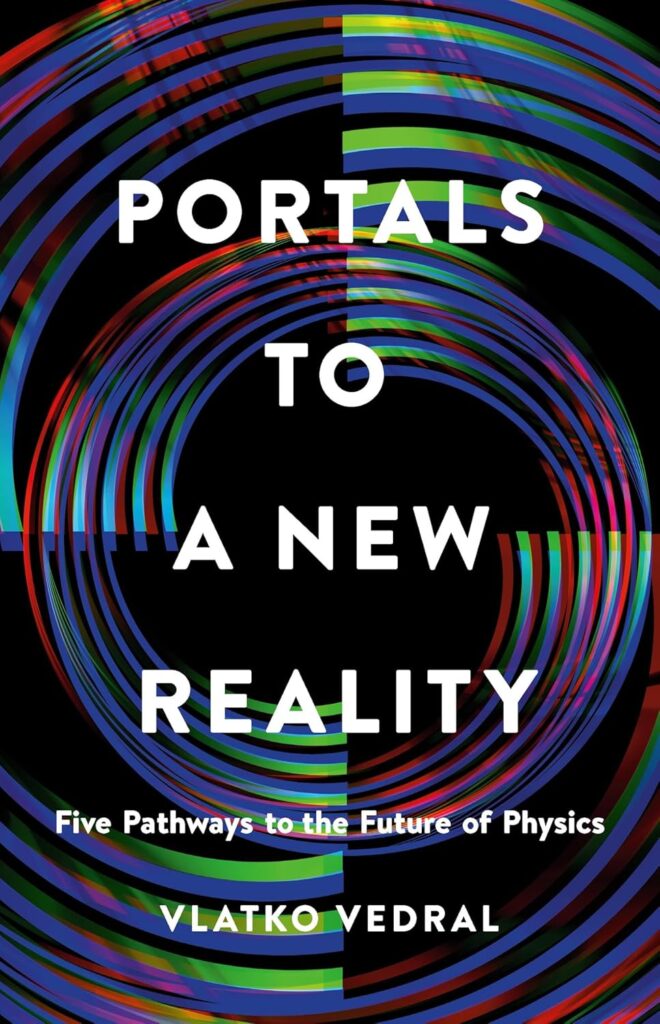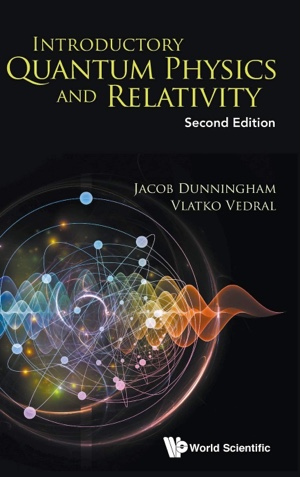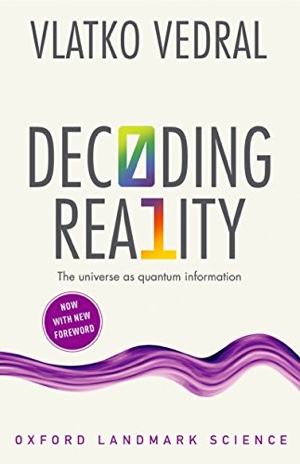Quantum Analogies
When we communicate some profound ideas in physics, we frequently try to use every-day analogies in order to make counterintuitive concepts more familiar. Nowhere is this more present than in quantum physics, which arose from the world of tiny objects of which we have no first-hand experience. On top of it, quantum particles, such as atoms and photons, behave sometimes in bizarre ways, so that there are simply no counterparts in the macroscopic classical world to relate to. I’ve already written a great deal about quantum physics, but now I’d like to focus more on the analogies we use to give it a more intuitive picture. This topic too is interesting because each analogy only takes us so far and all analogies have some limitations.
The quantum concepts we find difficult to understand are, broadly speaking, the superposition principle, the quantum measurement, the existence of entangled quantum states and the Heisenberg uncertainty relations. Within quantum physics, all these are related to one another, and are simply a consequence of the fact that we use vectors to describe quantum states and we use matrices to describe what we can observe (quantum states can ultimately be thought of as matrices too and are certainly also observable). But, of course, putting things in this mathematical way does not really illuminate us about what’s going on physically when we do quantum experiments. To a physicist, mathematics is simply not enough. We’d like to understand the quantum reality. Hence, analogies.
Let’s start with superpositions. Every quantum object can exist in multiple states at the same time. For instance, an electron inside an atom can simultaneously be close to the atomic nucleus and far away from it. Classically, it is clear that nothing can be in two places at the same time, so it is of little surprise that superpositions present us with a challenge. One analogy that keeps being used here is that quantum superpositions are like thinking (Bohr was very fond of this and perhaps believed it to be more than just an analogy). Thinking is frequently fuzzy, in the sense that our thoughts are – most of the time – not fully formed. Sometimes we even say that we are in two minds. Of course, this is presumably only meant to say that we are aware of two or more options and are going back and forth between them. They don’t really exist in a superposition, but are stored in different parts of our brain at the same time (I am guessing). It is simply not the case that one and the same neuron is quantum superposed (though this has not been ruled out either!).
Quantum measurement is counterintuitive because it “collapses” the state of a system being measured from a superposition of states to one definitive state. The unusual thing here is that a quantum measurement changes the state of the system. Classically, when we measure the speed of a car, we do not expect our measurement to change the speed we are measuring (otherwise we would have a great defense against speeding). But quantum measurements are like strict army officers who do not allow any room for uncertainty (this analogy is courtesy of Bill Wootters, of the no-cloning and teleportation fame).
Lieutenant: “Did I make myself clear, soldier?”
Soldier (very nervous): “I…I…I am not so su…sure. You did mumble a bit, and I may not have underst…”
Lieutenant (getting angry): “I ASKED YOU SOMETHING, SOLDIER: DID I MAKE MYSELF CLEAR?”
Soldier: “SIR, YES, SIR!”
Lieutenant: “HAVE I EVER BEEN UNCLEAR, SOLDIER?”
Soldier: “NO, SIR, NEVER. You’ve always been CRYSTAL clear, SIR!”.
Here again, the analogy is between an initially indecisive soldier and a quantum superposition. Of course, being unclear is not the same as being superposed (for superpositions are very clear and sharp quantum states), however, after the measurement the quantum system does indeed “forget” its previous state (in the same way that the soldier is forced to admit that the lieutenant has never been unclear).
Arthur Eddington, the famous astronomer who measured the bending of light thereby confirming Einstein’s General Theory of Relativity in 1919, compared quantum measurements to footprints in the sand. They erase anything else that was there before, but they also don’t last long and can be erased by another event such as a rising tide (in analogy with the subsequent quantum evolution of the system after it has been measured). The sand analogy is especially apt due to the impermanence of the quantum world, where particles can pop in and out of existence and can be converted into other particles at mind-boggling speeds.
Quantum entanglement has had more analogies associated with it than anything else. My colleague Charles Bennett, one of the pioneers of quantum information, is fond of the following one. Entangled quantum systems are like the hippies, says Bennett. None of them have any strongly-held beliefs, yet they all feel in perfect harmony with each other. Ha, ha, ha. I don’t know if hippies happen to be like this (Bennett does – he is from the baby boomers generation), but entangled states certainly are. When two particles are quantum entangled, neither has a well-defined state, however, when one of them is measured to be in one state the other one “jumps” to the same corresponding state.
Sometimes we talk about identical twins to explain entanglement. The twins could be separated at birth, but as soon as we meet one of them and notice that their eye colour is blue, we know that the twin must be the same (not matter where they are). However, the limitation of the analogy here is the fact that, unlike the twins, quantum particles could be in superpositions of two or more different colours. When two photons are entangled in their frequency, then we can measure one of them to be in the superposition of blue and brown, upon which the other photon will be in the same superposition of blue and brown. Clearly this has no analogue with twins whose eye colour cannot be in a superposition. This is why we say that quantum entanglement is a form of correlations that has no classical analogue.
Schrödinger called entanglement “(not one of many but) the characteristic trait of quantum physics” and introduced the famous ‘dead and alive’ cat to illustrate it. The Schrödinger cat, however, is not so much an analogy, but a consequence of quantum physics if applied to the macroscopic domain. Sometimes we hear it said that we don’t know if the cat is dead or alive until we open the box. It is true that we don’t know, but not because it is dead and alive. It is because it is entangled to the atomic decay and the poison. Both branches of the superposition exist (one in which the atom has decayed and the other one in which it has not) according to quantum physics and one contains a dead cat and the other one an alive cat. I’ve written a great deal about this too and will leave it at that here.
Some people are bothered by the fact that particles can be entangled across vast distances. To others, however, this suggests that there is a certain underlying unity of everything in quantum physics. Entangled particles should not be thought of as separate even when spatially distant. David Bohm, how was one of the quantum pioneers, talk about ‘wholeness and the implicate order’. He gives the following analogy to illustrate the interconnectedness. Imagine that there is a fish tank with a single fish inside but that you have never seen anything like that before. Imagine furthermore that there are two cameras pointing at the fish, one head-on and the other sideways. All you see are two well-separated screens on which these two images are projected. Now, when the fish moves, you will see each of these images change, in a way that seems magically connected since you think that they belong to two different fish. It looks to you like when one fish moves, the other one moves at the same time and in a similar way. In fact, you might even start to suspect that this phenomenon violates the theory of relativity as the motion takes place instantaneously. Bohm thought that entanglement points at a deeper hidden reality behind quantum entanglement. Here the power of the analogy is not just to give us a feeling for something, but to instruct us that perhaps we should explore what lies beyond (Bohm follows in Plato’s footsteps and the famous “cave analogy”).
The uncertainty principle tells us that certain properties such as a position of a particle and its velocity cannot be measured to arbitrarily high accuracy by the same measuring device. The better we measure the position of an electron the less we are certain about its velocity. Here we are back to the process of thinking as a good analogy to the uncertainty principle. This quote comes straight out of Bohm’s classic textbook on quantum theory: “…(quantum uncertainty) is analogous to asking for a detailed description of what we are thinking about while we are reflecting on some definite subject. As soon as we begin to give this detailed description, we are no longer thinking about the subject in question, but are instead thinking about giving a detailed description. In a similar way, when an electron is moving with a definable trajectory, it simply can no longer be an electron that has a definite energy.”
Bennett similarly talks about quantum states being like dreams and telling someone about our dreams is akin to a measurement. Our recollection “collapses” the dream and after the recollection all we remember is our own story and not the dream as it was. In this sense, dreaming and describing a dream are two things that cannot happen at the same time and are subject to an uncertainty principle. Of course, we do not understand processes in the brain well enough to really tell how thinking and dreaming work – we have no such laws in neuroscience. One day, when we understand consciousness as well as we understand physics, perhaps our analogies will improve too.
Finally, I leave you with a physics joke. It’s Heisenberg and Schrödinger in a car and a policeman stopping them for speeding.
Policeman: “Do you know how quickly you were driving?”
Heisenberg: ”No, but I know exactly where I am.”
Policeman: “You were doing 55mph in a 30mph zone.”
Heisenberg (throws up his hands and shouts): “Great! Now I’m completely lost!”
The policeman thinks this is suspicious and orders him to pop open the boot.
He checks it out and says: “Do you know you have a dead cat back here?”
“We do now, you dimwit!” shouts Schrödinger.
Vlatko.
Sign up to my substack
BOOKS
ASK ME ANYTHING!
If you'd like to ask me a question or discuss my research then please get in touch.





